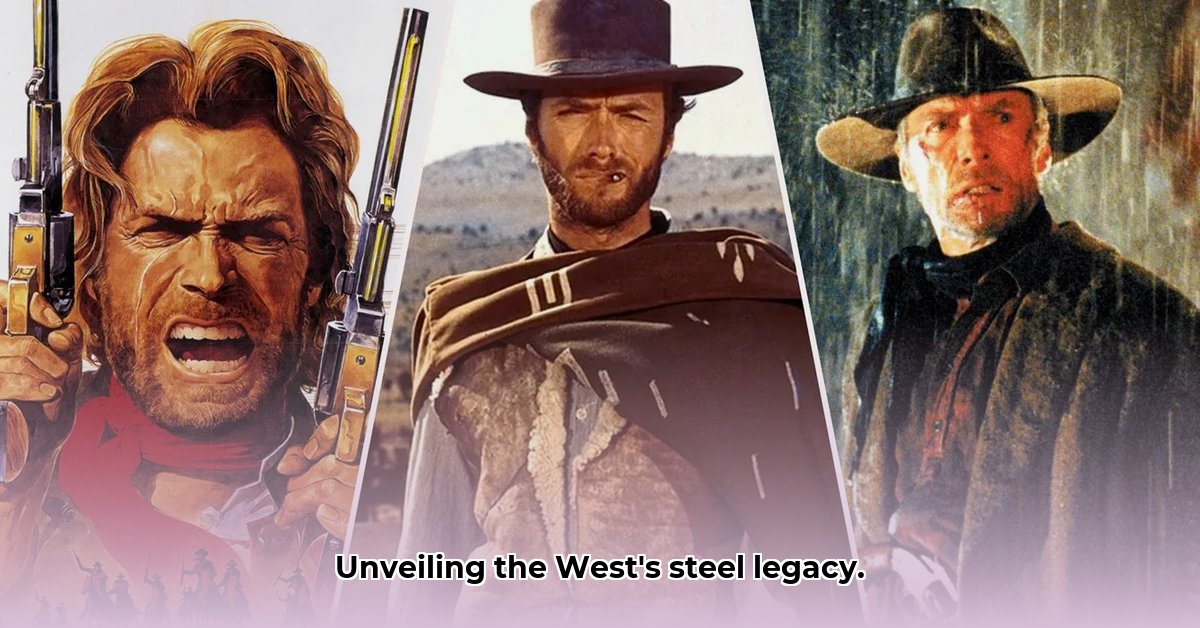Ever wondered about the story behind those classic Western knives? They’re more than just sharp blades; they’re a piece of American history, reflecting skill, family values, and a gritty determination. This is a thrilling adventure through the rise, fall, and potential resurgence of a legendary brand. We’ll uncover the secrets of their craftsmanship, the impact of global economic shifts, and how to identify authentic vintage pieces, offering savvy tips on investing in these iconic treasures.
The Enduring Allure of Cowboy Knives
The cowboy knife is more than just a cutting tool; it’s a symbol of the American West, embodying the spirit of independence, resilience, and self-reliance. These knives were essential for cowboys, ranchers, and frontiersmen who relied on them for everything from cutting rope and leather to preparing meals and protection. The legacy of the cowboy knife continues to resonate today, inspiring collectors, enthusiasts, and anyone who appreciates the rugged charm and practical functionality of these iconic blades. Authentic cowboy knives reflect a rich heritage through handcrafted designs and meticulous forging techniques.
- Versatility: Cowboy knives served a multitude of purposes on the open range, making them indispensable tools.
- Durability: Built to withstand harsh conditions and heavy use, cowboy knives were made to last.
- Symbolism: The cowboy knife represents the values of the American West, such as self-sufficiency and resourcefulness.
The Rise of Western Knives: A Family’s Vision
The story of Western Knives is inextricably linked to the Platts family, pioneers in the American cutlery industry. H.N. Platts, drawing upon his experience in established cutlery firms, moved west and founded the Western States Cutlery and Manufacturing Company in Boulder, Colorado, in 1911. Platts, along with his family, sought to establish a business that catered to the needs of cowboys, farmers, miners, and other workers who required reliable and durable knives for their daily tasks. The company quickly gained a reputation for producing high-quality knives that could withstand the rigors of the American West.
- H.N. Platts: The founder of Western States Cutlery and Manufacturing Company, bringing years of experience to the endeavor.
- Boulder, Colorado: The original location of the company, situated in the heart of the American West.
- Quality and Durability: Core values that defined Western Knives from its inception.
Innovation and Expansion: The Western Cutlery Company
Under the guidance of H.N. Platts and later his sons, Western Cutlery continued to innovate and expand its product line. The company introduced new designs, materials, and manufacturing techniques to meet the evolving needs of its customers. Western Cutlery knives became known for their distinctive styling, rugged construction, and exceptional performance. The company also established a strong presence in the military market, supplying knives to American soldiers during World War II and subsequent conflicts.
- Product Diversification: The company expanded its product line to cater to a wider range of customers.
- Military Contracts: Western Cutlery played a crucial role in supplying knives to the U.S. military.
- Distinctive Styling: Western Cutlery knives were easily recognizable for their unique designs.
Acquisition and Decline: A Changing Landscape
In 1984, Western Cutlery was acquired by Coleman, a well-known manufacturer of outdoor equipment. This acquisition marked the end of the Platts family’s involvement in the company. Subsequently, Camillus Cutlery Company purchased Western in 1992. Camillus, however, faced increasing competition from overseas manufacturers, leading to its bankruptcy in 2007. The Western brand, along with Camillus, was then acquired by Acme United Corporation, which moved production to Asia.
- Coleman Acquisition: The end of the Platts family’s ownership of Western Cutlery.
- Camillus Bankruptcy: The closure of Camillus Cutlery Company, impacting the future of Western Knives.
- Acme United Corporation: The current owner of the Western brand, with manufacturing based in Asia.
The Resurgence of Interest: Collectors and the Vintage Market
Despite the challenges faced by Western Cutlery in recent decades, the brand continues to hold a special place in the hearts of collectors and knife enthusiasts. Vintage Western knives are highly sought after for their historical significance, craftsmanship, and unique designs. Collectors scour online marketplaces, auctions, and estate sales in search of rare and well-preserved examples of Western Cutlery’s iconic blades. The enduring appeal of Western knives reflects a deep appreciation for American manufacturing heritage and the enduring legacy of the American West.
Identifying Authentic Western Knives: A Guide for Collectors
Authenticating vintage Western knives requires a keen eye and a thorough understanding of the brand’s history and manufacturing practices. Collectors often rely on several key indicators to determine the authenticity of a Western knife, including:
- Tang Stamps: The markings on the blade’s tang can provide valuable information about the knife’s age and origin. Western Cutlery used a variety of tang stamps throughout its history, each corresponding to a specific period of production.
- Blade Markings: Model numbers, logos, and other markings on the blade can also help to identify the knife and its vintage.
- Handle Materials: The type of material used for the handle can be another clue. Western Cutlery used a wide range of handles.
- Construction Details: The overall construction of the knife, including the blade grind, handle attachment, and sheath design, can reveal important clues about its authenticity.
By carefully examining these details and cross-referencing them with known examples, collectors can increase their chances of acquiring genuine vintage Western knives.
What Defines an Authentic Cowboy Knife?
When the rugged plains of the American West were being settled, a cowboy’s knife wasn’t just a tool—it was a lifeline. A true cowboy knife is characterized by its practicality, durability, and distinctive Western aesthetic. Born from necessity on the open range, these knives evolved to meet the demanding needs of the American frontier.
The cowboy knife traces its lineage back to the mid-1800s when cattle drives shaped the American West. Cowboys needed versatile tools that could handle everything from cutting rope and leather to preparing meals and self-defense. Unlike ornate or specialized blades, cowboy knives were working tools first and foremost.
James Black, the legendary Arkansas blacksmith who crafted the original Bowie knife, influenced many early cowboy knife designs. His emphasis on functionality over flash became a hallmark of Western blade craftsmanship.
Several key characteristics stand out:
- Practical Blade Design: Typically 4-6 inches, with a clip point or straight back blade
- Full Tang Construction: For maximum durability during daily use
- Simple, Functional Handguards: Often minimal, just enough to protect the hand
- Natural Handle Materials: Traditionally bone, wood, or stag horn
- Horizontal Carry Sheaths: Designed for quick access while on horseback
- Cross-Draw Orientation: Positioned for easy reach across the body
The Future of Western Knives: A Brand Reborn?
With the Western brand now under the ownership of Acme United Corporation, there is potential to revive this iconic American brand. By focusing on quality, craftsmanship, and heritage, Acme United could recapture the essence of what made Western Knives so popular in the first place. A renewed commitment to American manufacturing, combined with innovative designs and marketing strategies, could help Western Knives regain its prominence in the cutlery market.
Conclusion: A Lasting Legacy
The story of Western Knives is a testament to the enduring appeal of American craftsmanship, innovation, and the spirit of the American West. From its humble beginnings in Boulder, Colorado, to its rise as a leading manufacturer of quality knives, Western Cutlery has left an indelible mark on the cutlery industry. Whether you’re a collector, enthusiast, or simply someone who appreciates a well-made knife, the legacy of Western Knives is sure to inspire for generations to come.
- How to Stop Apps From Running in the Background to Boost Your - December 1, 2025
- How To Move Apps On Your Droid For Better Organization - November 30, 2025
- How to Move Apps on Android for Better Organization - November 29, 2025










